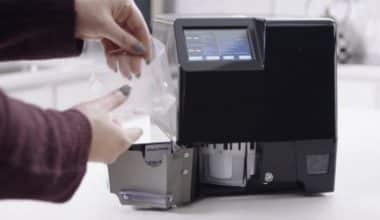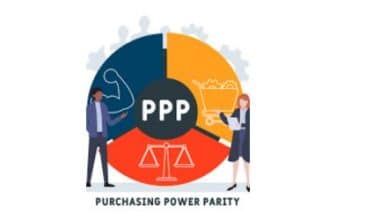Microlending entails giving small loans, typically under $50,000, to people or organizations who are struggling financially and are unable to get traditional loans from banks or credit unions. They frequently have lower interest rates or funding requirements than traditional financing. Instead of traditional banks, most opt to use a microlending platform or software. The microlending platform then connects this business owner with a borrower or lenders who are willing to make a loan. Most small business use microlending for investment purposes.
Micro Lending
When small business owners receive microloans, this practice is known as microlending. A single person may offer these modest loans, or they may be obtained from several investors who each put up a portion of the total sum. Microlending, also referred to as microcredit, is a form of financing in which small loans are given out by private parties as opposed to banks or other financial institutions. These loans are available to entrepreneurs and business owners who want to develop their ideas or grow their businesses.
Most microlending businesses and initiatives aim to improve communities by facilitating access to capital and fostering entrepreneurship. Microlending for investment purposes offers investors the chance to support groups, causes, or communities that are important to them in addition to the borrowers. Additionally, based on the interest rate, they might make a little bit more money from their investment.
In addition to eradicating poverty, microlending software or platform provides businesses with the chance to expand and grow through loans. Some microlending institutions occasionally offer options for these sole proprietors to receive business coaching.
How Does Microlending Work?
In contrast to traditional financing methods, microlenders typically do not seek to profit from their loans through interest and fees. However, the majority of these lenders are motivated by a desire to support the less fortunate members of their communities. The majority are non-profit organizations that concentrate on lending to individuals or groups that are consistent with their mission, such as women, underrepresented groups in business, and minorities. They frequently give borrowers coaching and training in addition to financial assistance to increase the likelihood that they will succeed and repay their loans.
Consider a scenario in which a small business owner requires $1,000 to fix the bakery’s equipment. She decides to use a microlending investment platform or software because she does not believe she will be able to obtain financing from a traditional bank. The microlending platform then connects this business owner with a potential investor or potential investors who are willing to lend the money. The money is sent to the microlending organization, then to the business owner after the investor(s) and the business owner have agreed on the loan terms. Now that she has used her $1,000 loan to repair equipment, she will be required to repay it following the terms of the loan agreement.
Advantages of Microlending
#1. Accessibility
Microloans enable investors to support domestic and international businesses. Using one platform to manage all the funds simplifies cross-border transactions. Small business owners who lack a credit history or a high credit score should consider applying for microloans as a great way to get credit. As a result of the risks involved, businesses frequently have to pay high-interest rates; however, dependable borrowers are rewarded as a result. Individuals that use microlending for investment purposes have easy access to microloans.
#2. Quicker Loan Disbursement
Microloans can be handled in a matter of minutes. Loan disbursement can happen more quickly because there is not a complex underwriting procedure involved. Microloans are a good choice in emergencies. In an emergency, having access to this kind of loan that can be approved quickly is crucial. This procedure greatly streamlines the application process, which you can complete quickly online or over the phone. The amount of documentation required is less.
#3.Possibility of Improving Credit
Microlending gives business owners a simple way to establish credit, which is one of its biggest advantages. Your credit score will rise as a result of regular loan repayment, making it easier for you to get bigger loans in the future. Microloans are a great place to start if this is your first time borrowing money from a bank, credit union, or other financial institution.
#4. Easier Eligibility
In comparison to conventional small business loans, microlending has less stringent eligibility requirements. No specific purpose for taking the loan needs to be stated; these loans assist business owners in purchasing raw materials, inventory, equipment, and other expensive items.
#5. Using the Most Recent Technologies
Due to the increased adoption of fintech, microloans are becoming much more widely accessible. Lenders can diversify their investment portfolio by making small loans to a variety of companies. Loan management is simple because it takes place on a single-managed microlending software or platform. Online P2P lending platforms also make it easy to lend across borders.
#6. Lower Complexities
This kind of lending involves fewer complications because the main choices are how much money to borrow and when to repay it.
One of the main reasons why microlending is so well-liked by small business owners is because it is convenient and straightforward. These loans can be very beneficial in places or circumstances where traditional financing is not possible because of the strict documentation requirements set forth by banks and other traditional financial institutions.
Micro Lending Company
#1. Kiva
Kiva is a global nonprofit organization that was established in San Francisco in 2005. Its goal is to increase financial access and support the development of underserved communities. Kiva, which operates under the motto “make a loan, change a life,” allows loans of as little as $25, and 100% of all investments made on the site go directly toward funding loans. Furthermore, Kiva offers microloans up to $15,000 that have no interest and are repaid over a maximum of 36 months. Kiva is a top-rated microlending platform that facilities easy access to funds that a small business uses for investment purposes.
Kiva microloans have covered college costs, assisted women in starting their businesses, allowed farmers to purchase equipment, and helped families afford urgently needed medical attention. Additionally, Kiva loans do not need collateral, years’ worth of cash flow documentation, or a minimum credit score. However, to be taken into consideration, borrowers need to meet the following minimal requirements:
- Both the lender and the borrower must be American citizens who are at least 18 years old.
- The creditor’s use of the loan must be commercial.
- The Borrower shall not be currently subject to any lien, bankruptcy, or foreclosure.
- The borrower must be eager to show off their social capital by asking a select group of their close friends and family members to lend them money.
#2. SBA Microloan Program
Smaller loans up to $50,000 are available through the SBA Microloan Program to help start-up and growing small businesses as well as some not-for-profit childcare facilities. A microloan typically costs $13,000. The SBA provides funding, management support, and technical assistance to locally based nonprofits that have experience in lending and are specifically designated intermediary lenders. This is a platform that offers microlending funds to small business owners for investment purposes
These middlemen manage the microloan program for qualified borrowers. Depending on their specific lending and credit criteria, each intermediary lender decides who is eligible. Intermediaries typically demand some form of collateral in addition to the business owner’s guarantee. The maximum repayment term allowed for an SBA Microloan is six years. Typically, interest rates range from 8% to 13%.
#3. CDC Small Business Finance
Microloans for small businesses are available through the CDC’s Small Business Finance program. New or startup businesses are the best candidates for these loans. The funds may be used for working capital, administrative expenses, tenant improvements, equipment, company acquisition, and debt refinancing. Microloans from CDC Small Business Finance offer accessible funding. For long-term success, each loan includes 12 hours of free business counseling. Businesses that are unable to get financing from banks or credit unions can apply for one of these loans. Loans are available with terms of three to five years and fixed interest rates between 8% and 10%.
#4. Grameen America
For female business owners who are living in poverty, Grameen America offers microloans (starting at no more than $2,000), financial education, and support. The borrower creates a group using the assistance of four other women who share her interests in Grameen America’s unique business model. After that, the group goes through training to learn about borrowing, saving, and developing credit.
Following the training, each participant in the group establishes a savings account and is given a microloan to help grow their small business. In addition to making payments, the group meets once a week to continue learning about finances and business. Grameen America’s reporting of microloan repayments to Experian, which enables borrowers to raise their credit score and become eligible for more financing, is an additional advantage of using their services to finance their needs.
#5. Accion Opportunity Fund
A reliable microlender for start-ups and companies with bad credit is Accion Opportunity Fund, a division of the international nonprofit Accion. Accion is a platform that provides funds for microlending investments
You must have been in operation for three months or more to be eligible for an Accion business loan. Accion does not have a minimum credit score requirement, and the loan program-specific annual income requirements differ. When you apply for a microloan, Accion will make you several offers with various terms and interest rates from which you can select the one that best suits your needs. Accion offers loans with terms ranging from 12 to 60 months and amounts ranging from $5,000 to $100,000.
For small business owners, Accion provides free business mentoring and coaching in addition to a library of financial tools. loans range from $5,000 to $100,000 with interest rates ranging from 5.99% to 16.99%
#6. Justine Petersen
Small businesses can choose from several different microloan programs offered by St. Louis-based Justine Petersen. In addition to its Able Biz microloan program, this non-profit organization also provides SBA microloans and microloans through a collaboration with a nearby CDFI. Depending on the program and your company’s eligibility, these loans can be obtained for up to $50,000 with varying repayment terms and interest rates. Justine Petersen provides smaller microloans through the Able Life program that range up to $2,500 and do not require collateral.
For owners of small businesses, Justine Petersen also provides counseling, education, and mentoring. Additionally, borrowers who fund with this organization have access to post-loan assistance to support them in achieving their objectives for business expansion. This is one of the best providers of funds for microlending investment purposes.
What Is the Meaning of Micro Lending?
Microcredit, also known as microlending, is the term for small loans to individuals (often without security) to launch new businesses. The main activity involved in microfinance is microlending, which is also one of the most well-known practices in the sector. Microlending aims to assist borrowers increase their incomes and achieve financial independence through entrepreneurship.
How Do Micro Loans Work?
Microlending is the practice of providing little loans, or “microloans,” to people or companies who do not have access to conventional financial services.
Government institutions, online microlending services, and nonprofit groups that focus on particular communities or demographic groups frequently offer these loans, which are typically under $50,000. Microloan providers might provide these people with assistance with their endeavors by providing loans with reasonable terms and affordable interest rates.
After receiving the money, borrowers use it to launch or grow their businesses. Until the debtor repays completely, the borrower usually requires them to make interest-plus-amount-of-loan payments in installments.
What Is the Difference Between Micro Lending and Microfinance?
The term “microfinance” encompasses the full range of financial services. Financial services like banking, insurance, and financial advice are frequently provided to people who do not have access to local financial services. Microlending is a subset of microfinance and is the process of obtaining loans for these people.
How Profitable Is Microlending?
Some investors find microlending to be a good investment. Microloans produce cash flow returns and are a means of increasing your income diversification. Microloans frequently provide greater rates of return than other fixed-income investments.
What Are the Disadvantages of Micro Loans?
Additionally, they make loans without requiring any security, which raises the danger of bad debts. This hampers the expansion of microfinance organizations. Interest rates charged by microfinance institutions are significantly higher than those of traditional banks. Your interest and charges could go up: Due to their smaller size and quicker payback periods compared to traditional loans, microloans may result in you paying a higher interest and fee total.
What Are the 3 Types of Microfinance?
- Village Savings and Credit Associations (VISACAs),
- Finance Companies (FCs), and.
- Fiduciary Financial Institutions (FFIs).
Conclusion
Microlending can be a profitable venture for some investors. Microloans produce cash flow returns and are a means of increasing your income diversification. Microloans can frequently offer higher rates of return than other fixed-income investments. One problem with microloans is that they might be riskier if the borrower has good credit. Microloans are subject to the same rules as other loans made through the lending platform, and the administrative costs incurred by investors are frequently higher than those of other debt or bond investments.
Microlending is a crucial financial resource for small business owners who need to make short- to medium-term purchases of inventory, equipment, or operating expenses. If you require a loan but can not get one because of bad credit or a lack of borrowing history, think about what microloans have to offer.
Depending on your situation and financial objectives, microloans might be the best option for you. Knowing your options will help you choose the course of action that will work best for your particular financial situation.
Related Articles
- SBA MICROLOAN: Overview, Lenders, Program, Requirements, Cares Act
- BEST SMALL BUSINESS LOANS FOR BLACK WOMEN and; Minorities: All you Need
- Common Uses for Business Microloans






